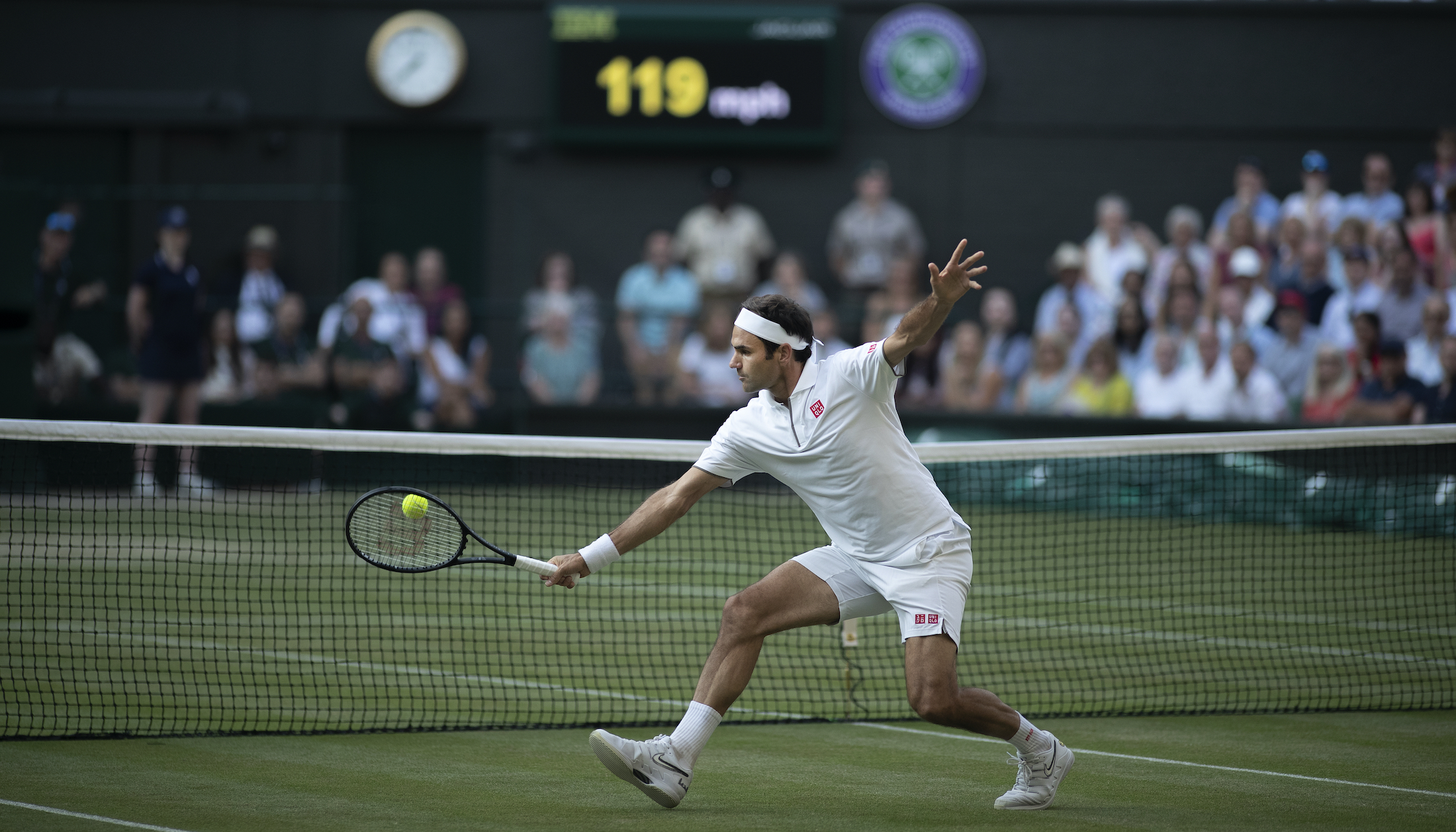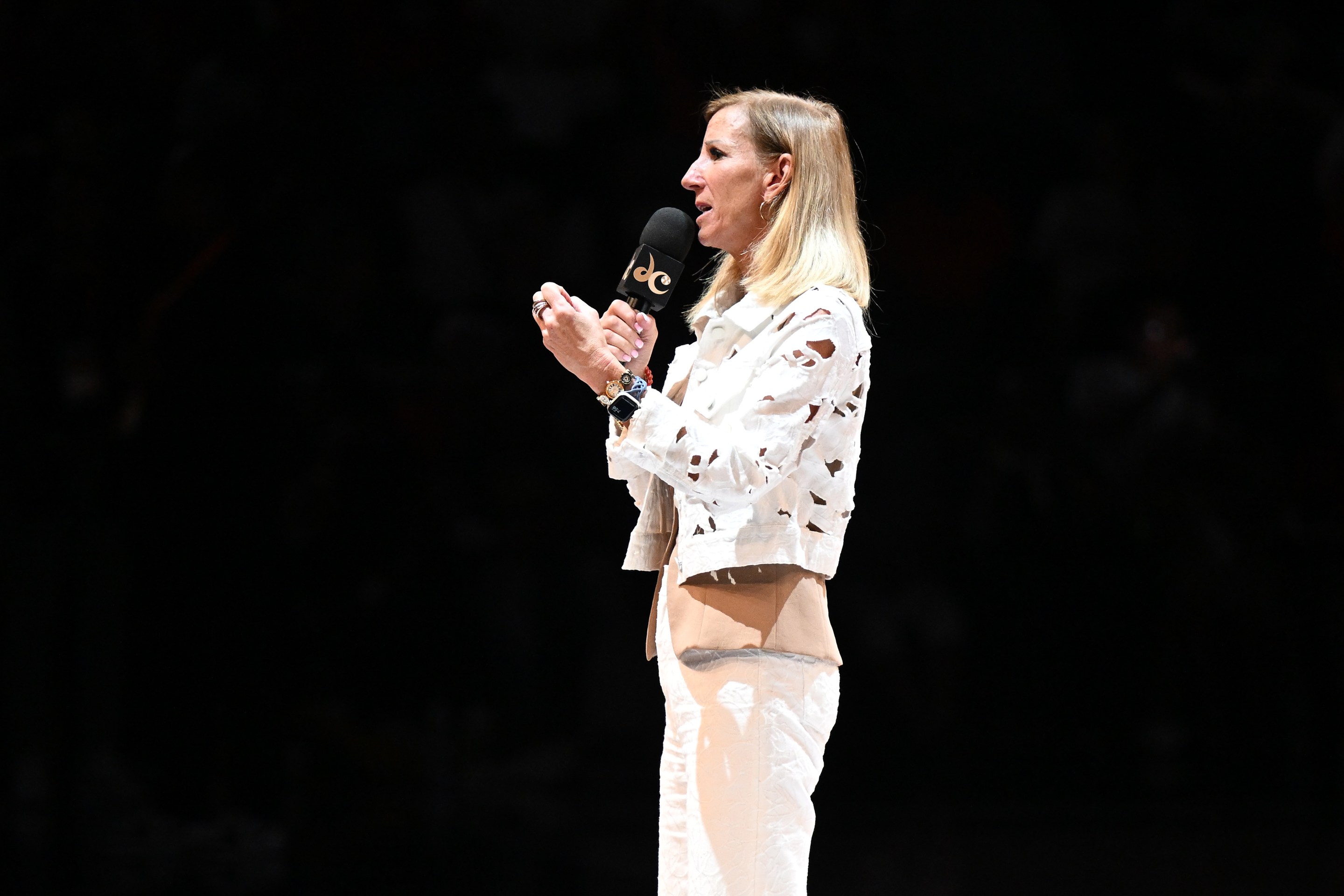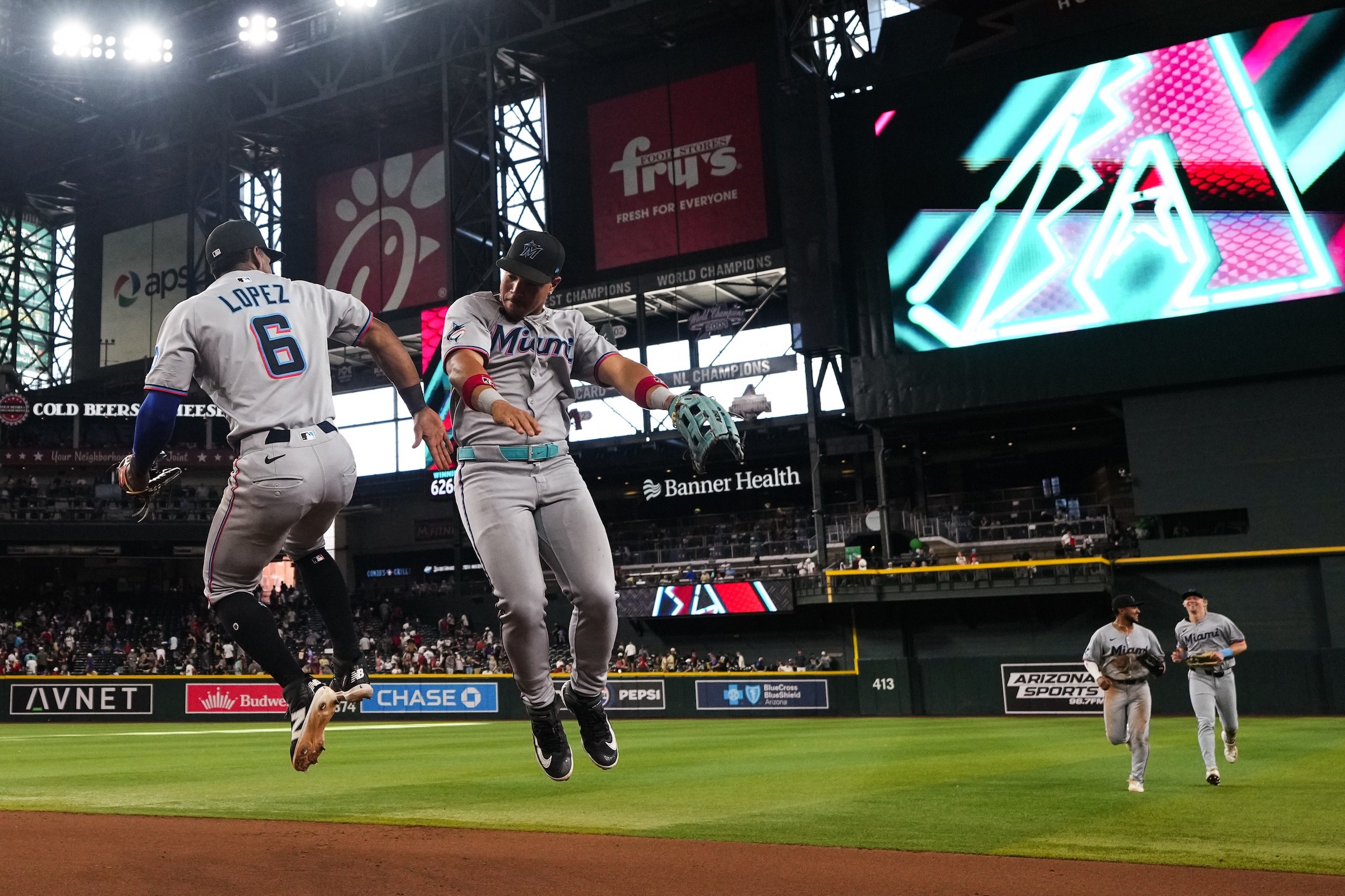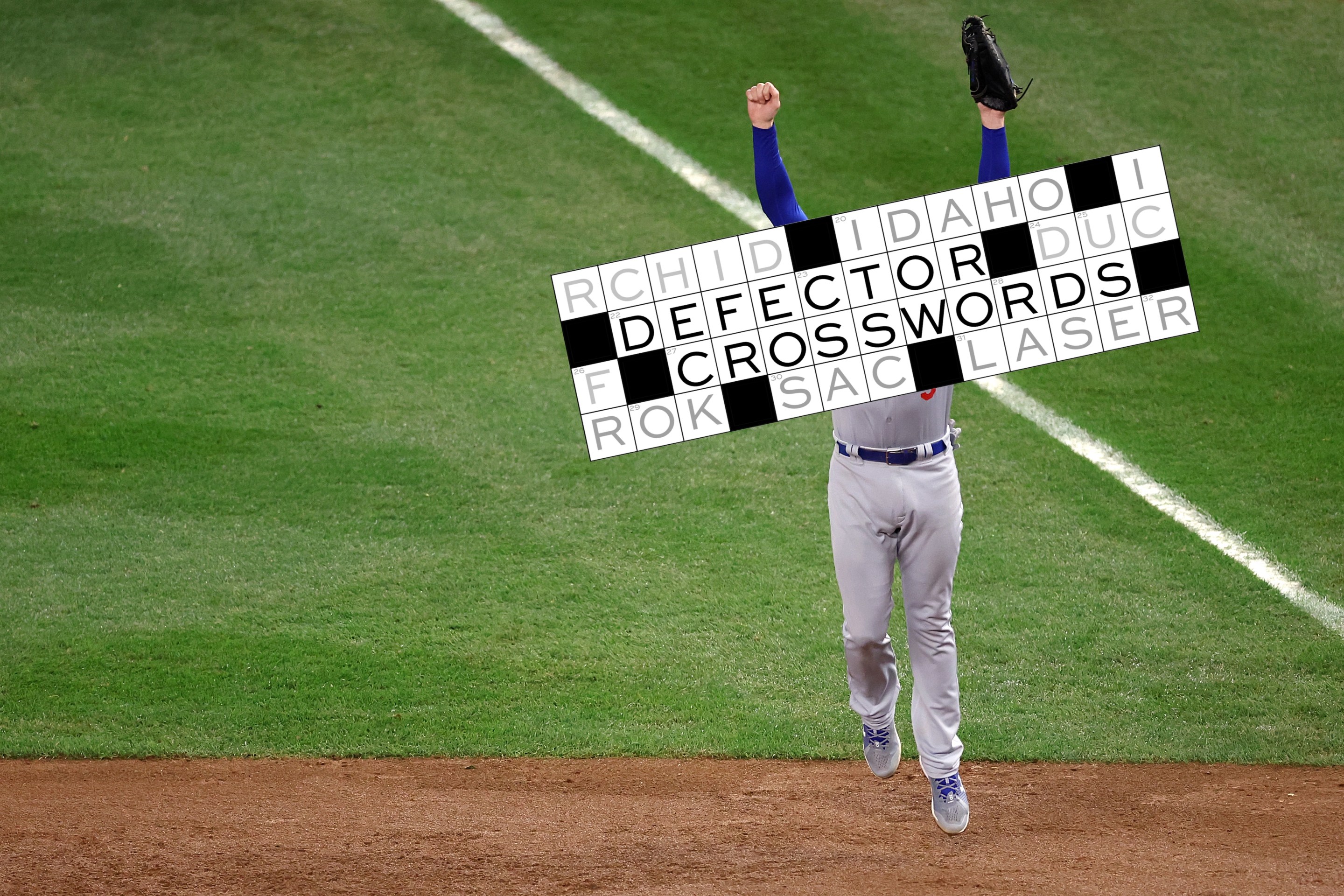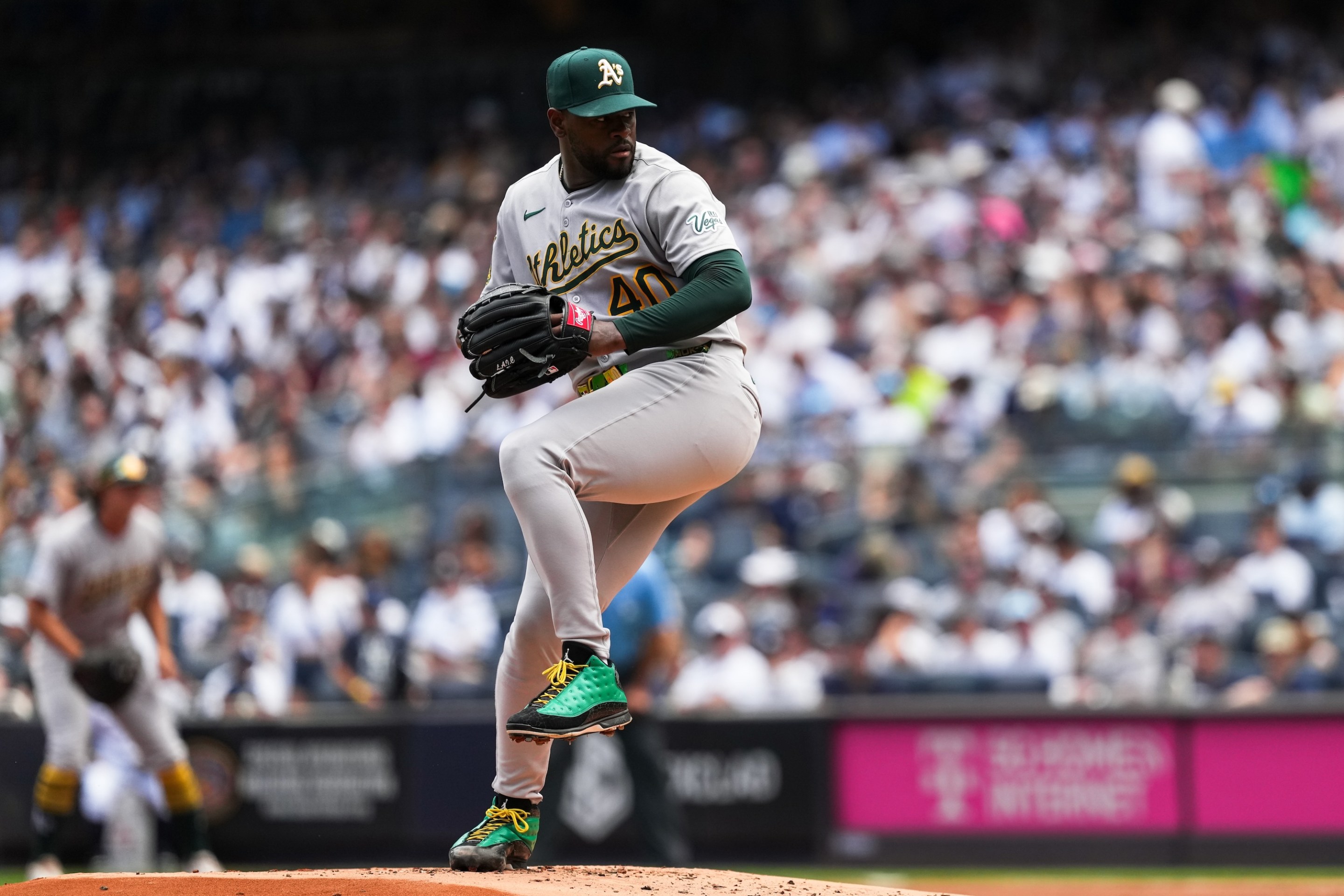It's the end of December 2016, at an undisclosed location in Dubai, surrounded by palms, and nearly a million people are tuning in to watch Roger Federer intently. After taking the back half of the year off for a knee surgery and rehab, there he is again, back on the tennis court. All this scrutiny, but there are no points or money at stake—we're talking about practice. Looking now at a comment on a YouTube archive of this live stream, I find a kindred sicko: “I remember waking up at 3am to watch this live.”
There's no shortage of beloved people in this world, but it's hard to imagine many of them inspiring this kind of fascination about something as routine as practicing scales or revising a manuscript. The eyeballs are there anyway, eager to see how mundanity adds up to transcendence. It's encouraging proof of life from a 36-year-old coming off a meniscus procedure, whose playing future sits in purgatory. Federer is tossing tennis balls back and forth, jump-roping, and jogging. With him are his coach Ivan Ljubicic and a hitting partner, then-world No. 15 Lucas Pouille. Finally the object of scrutiny picks up his tennis racquet, his fifth appendage, and takes some easy groundstrokes. "It's really only about feeling the ball right now," Federer says, over a headset, which catches his idle thoughts and constant panting, some of the only evidence that he has ever had to exert himself on a tennis court.
Federer, who has always preferred live match play to rote drills, begins to run some practice games with his partner. At one point, Pouille sends a serve out wide. Federer gets on top of the ball and he delivers a weird slice, low and quick, back to the server's feet. A slice is typically a defensive neutralizing shot, but he's infused this one with some funky offensive sting, driving hard through the ball. According to Fabrice Santoro, a former player who knows a thing or two about spin, Federer has five different types of backhand slice at his disposal. Perhaps this is one of those. Whatever it is, Pouille can't put the return back into play. "I always feel like in practice you can try stuff like that," Federer says over the headset. "Why not? Because if you don't try, you don't know if it's going to work. And the surprise play is important."
Some players dip a toe into surprise, only when pressed. Federer spent two decades in it, casting it in all directions, and wound up charming the world so deeply that people might wake up in the middle of the night to watch him cultivate it on a practice court. To watch a Federer highlight reel is to be awed by some of the finest technique of the 21st century; it's also to hear John McEnroe honk ad nauseam, "I bet he doesn't work on that one in practice." But maybe he did. Federer seemed to spend his would-be dull hours exploring the entire probability space of tennis shots.
One way to excel at tennis is to develop a reliable and replicable mechanism to get to your preferred bread-and-butter shots. Federer's way was to figure out all the ways to wave his racquet, get acclimated with the unknown terrain, and find a smile in all of them. Maybe he'd see that same ball again, in a point that actually mattered, and then he'd dispatch it with his muscle memory. Even if he never did, at least he knew that he’d found a definite solution to a someday problem. Confidence might be the sum of secure answers to someday problems. And whatever records may or may not stand at the end of history, that much will endure: Federer always knew that tennis was a game to be played. Why not go out there and play it? If it's fun enough, you'll do it for 24 years.
Before the descriptors turned purple and kicked up to a saintly register, Federer was like so many teenagers with a gift: messy and ornery. Though he was ranked No. 1 in the juniors by 1998, young Roger was known for flareups and self-defeating tendencies. He credits his first coach, Peter Carter, for helping him cohere as a player, in ways both direct and indirect. "I think if I can say thank you for my technique today, it's to Peter," Federer said in 2019, as he reflected on Carter's death in a 2002 car crash. "I guess he didn't want me to be a wasted talent [...] It was somewhat of a wake-up call to me when he passed away, and I really started to train hard." A year later, Federer took his first major, at Wimbledon. It was a challenge for him to figure out how to behave on a court, even if he knew every shot on it. He had some thoughts on this subject at his last-ever press conference this month, when a reporter asked him why everyone swooned at his artistry but no one talked about his grit.
“For some of the players it’s maybe easier to have that [grit], it’s more ingrained in their DNA. I feel like I had to go find it and take care of it,” Federer said. “Me, I was more lucky or more gifted with racquet head speed, or that stuff. So I’m proud of how far I’ve come because I know this was something I really struggled with early on. I was criticized heavily, maybe fairly or unfairly, whatever it is—why wouldn’t I fight more when losing?”
“So I didn’t understand quite what that meant. Do I have to grunt? Do I have to sweat more? Do I have to shout? Do I have to be more aggressive towards my opponents? What is it? It’s not me. I’m not like that. It’s not my personality. And a lot of people told me, 'Well, you have to be tougher and not so nice, maybe.' I tried, but it was all an act. I said, 'I’ll try the nice way. Let’s see where it takes me.'”
It took him to one of the most dominant stretches in sporting history. If in the early aughts Federer learned how to live on the pro tour, then in the mid-aughts he learned how to kill the pro tour. He collected 11 of the 16 major titles between the 2004 and 2007 seasons, and held the No. 1 ranking for 237 consecutive weeks, keeping up a maddeningly cool and slightly supercilious demeanor throughout. Over the 2005 and 2006 seasons, he went 173-9. For all this love now, an inevitable force isn’t always savored in real time. At the 2007 U.S. Open, the PA blasted "The Imperial March" as he played his night session in an all-black outfit, and they'd run it back a few times over the years.
Aside from dread, Federer also inspired envy from those who weren't able to maintain that sense of playfulness in every sphere, from the practice court to the heat of competition. “My source of jealousy isn’t with all the titles that Roger’s won,” Andy Roddick, a frequent victim, said during a recent podcast interview. “It’s his ease of operation, right? The way that he’s able to go about his business. I would play a practice match, be out there for two hours, I’d play it just like I was gonna play three days later in the first round of a slam. And I’d walk by Roger’s court, and he’s laughing and joking and he’s relaxed. That was where my jealousy came in.” It's hard to make professional tennis look easy, the travel all year and toil in the sun. Plenty of superstars make the work look exactly as ugly as it is. Of all pros in the last two decades, Federer's body and mind looked least at odds with the arduous tasks he set for them.
Prime Federer didn't look like anything else, and while that could be said of any great at their apex, he supplied some uniquely identifying visual and audio cues for the close viewer. Track his position on the court and it was as if he played a personal game of "floor is lava," with danger filling every inch behind the baseline. Federer's fiendish positioning was both a bet on his own unholy hand-eye coordination and an ego-crushing assessment of the opponent's capacity to make him regret it. So much psychic damage can be done in these meta games.
Each tennis player has an ideal comfort zone for hitting, depending on variables like height, limb length, grip choices, and racquet specs, but chances are it's between the knees and the shoulders. The task is then to move your body forward or backwards until the ball enters that comfort zone. Young Federer played as if agnostic to the concept of comfort altogether. The ball might find him at sock level. That was fine—his feet would flicker into a workable configuration and, balancing the firmness and looseness in the arm that is tennis's basic paradox, he would swing clean through it. The term for a ball struck immediately after its bounce is a "half-volley." For most players the half-volley is a piece of desperate improv, the goal being solid contact and survival for the next ball. For a while there, Federer pretty much half-volleyed everything on purpose. It is difficult to overstate how unusual this was.
Federer made it hard to trust your ears, too. This is the signature of his peak tennis: He would hit every ball a fraction of a second earlier than anyone could sanely expect, making contact well in front of body, his head stonily fixated on the optic yellow blur well after he had plowed his racquet through it. As a viewer and listener, you are constantly taken aback by this, like a clap that lands just ahead of the beat, over and over. As an opponent, there's no chance to register surprise that the ball is already at your doorstep. It's more misery than marvel. This was the purpose behind Federer's experiments in extreme timing: The less time he took to hit the ball, the less time his opponent had to recover.
As Federer grew into his talents, his methods for stealing time became increasingly deranged. It didn't stop at the half-volley. If he was unusually impatient, he'd skip the bounce altogether and snatch the ball out of the air with a swinging volley, like a Viking catching a spear in mid-air and throwing it back. Or he could close huge stretches in the court with noiseless feet and pop the ball out of the air with the crispest conventional volleys. He played what others would call "low-percentage tennis," with an extraordinarily high rate of success. Eventually Federer would take his “no time for you” principle to its logical extreme, applying it to the hardest-struck shot in the sport, the serve. He would ambush his opponents by blocking back a serve return and storming the net in one smooth charge, earning its own nickname: SABR, or Sneak Attack By Roger.
📚 SABR /ɛs-eɪ-biː-ɑː/
— Tennis TV (@TennisTV) August 20, 2020
Meaning: Sneak Attack by Roger (see also: @rogerfederer)
First Used: @CincyTennis, 2015 pic.twitter.com/EiyJDOpK2N
To play this aggressively requires supreme, almost arrogant conviction in your own gifts, the tennis equivalent of answering a question mid-sentence. Modern racquet and string tech has made the passing shot as deadly as ever, and the volleys—swinging, half, or otherwise—need to be that much more decisive and accurate. At Indian Wells in 2019 I spent a pleasant 90 seconds grilling Federer about Stefanos Tsitsipas, a young player who seemed to have inherited a dash of his net hunger. He said he admired Tsitsipas's disposition. To close in on the net is not just a matter of simply hauling one’s ass forward—a player must arrive there armed with the belief that “he can and will win the point,” Federer told me. Perhaps only Carlos Alcaraz, in the current landscape, can say he has internalized that message. No amount of self-belief can approximate all-time feel.
As the aughts passed into the teens, Rafael Nadal and Novak Djokovic dislodged Federer from his catbird seat. Nadal had expanded his empire beyond clay courts, and Djokovic's impregnable defense was a danger everywhere. Federer had finally found his equals. He was no longer even safe in his backyard: on the grass that best complements his pinpoint serving and improvisational knack. Together the three of them pushed the men's game into territory it has only fleetingly resembled since; their communal pile of 63-and-counting majors is a testament to that.
While in his prime he was undeniable, watching Federer in this era had a glass-cannon quality. There was something precarious about watching Federer operate at the highest register against his true competition, a brittleness his fans know more intimately than they’d care to admit. While his two rivals remained historically stout from the baseline, his game of fine margins was prone to go haywire: shanking forehands into the clouds, missing unearthly mid-court pickups previously taken for granted, banging a crucial ball into the top of the net cord. It was an exhilarating if draining era to witness. He’d wind up with losing records to both Nadal (16-24) and Djokovic (23-27).
He would have one more look at the biggest hardware, though. That 2016 practice session in Dubai marked a transition point. Federer was about to begin what was to me the most meaningful phase of his career, partially because I had the thrill of documenting it in real time, partially because it stood in defiance of time's erosion, partially because it showed that a genius was willing to tinker with a successful formula. One last comeback.
The 2017 season brought unexpected renewal. Federer increased the size of his racquet head, adhered to his coach Ivan Ljubicic's insistence that he rip through his backhand instead of opting for a passive slice, and went 54-5. He won the Australian Open final over Nadal and rejiggered the state of their rivalry, eventually winning five of their six last meetings. In this late period, Federer's timing was as pure as ever, and he recreated his old sense of unfettered play. He won Wimbledon without dropping a set and soon regained the world No. 1 spot for the last time. In 2018 he won the Australian Open, his 20th and final major, and remained in contention for the next two seasons even as his body advanced its own agenda. In 2021, he pushed through to one last quarterfinal at Wimbledon, carrying the knee damage that would bring about his conclusive, career-ending surgery.
Roger Federer is a role model in disposition if not in execution. When I play tennis, and even the faintest stakes are set, I feel the limitations instantly: my lazy feet, poor visual acuity, and rickety technique. There are so many barriers that keep my body from enacting what my mind wants to do, and I come crashing up against them with every step and swing, the freedom of open rallies suddenly locked into confinement. The solution is probably to take after Federer's mindset, but not after his technique. Playing the way he played at his best required him to never cede an inch, to race into incoming fire and trust in his pliable wrist, pre-cog reflexes, and aqueous footwork. In the absence of any of these elements, it's a blueprint for looking like an idiot, and this holds almost as true for pros as it does for amateurs.
The extinction of this singular brand of tennis made his exit that much more poignant. Federer played his last tennis outside of standard competition at the Laver Cup, the exhibition tournament run by his management company. The camera captured him wrapping his racket in fresh white grip tape for the last time, and I suddenly became aware of a terrible hollowness in my chest. He lacked the mobility to play singles, so he stuck to doubles with his buddy Rafa, both of them ailing physically (Federer's bum knee, Nadal's abdominal strain) but still bringing the fight to an American team of Jack Sock and Frances Tiafoe.
Given that his participation was in question days before the event, Federer surpassed expectations, slower to the ball but still cracking with his usual timing. He put a ball through a hole in the net, inventive even in error. He had a match point on his serve and failed to convert, triggering an all-too-familiar pang. His goodbyes to tennis were tearful and suffused in the glow of peers and admirers. “I didn’t want it to feel lonely out there,” Federer said later, and he had some company in tears: a blubbering Rafa, rivalry sublimated into the sport’s best friendship.
If there's one thing you watch today, make it this.#LaverCup | @rogerfederer pic.twitter.com/Ks9JqEeR6B
— Laver Cup (@LaverCup) September 23, 2022
My favorite memory of Federer will be before all the tears, when both he and Nadal were staging dramatic returns to competition. In the fifth set of their 2017 Australian Open final, Roger's friend had gone up a break to lead 3-1. I'd stayed up all night watching with some sleepy neutrals and a Nadal-acolyte friend. Over the 3:38 epic, the room grew quieter, the sofa distance between us longer. Somehow Federer began to bend the match in his favor. Winning this 26-shot rally detonated any foregone conclusions.
So much conventional wisdom dissolved here: that major titles couldn’t be won at age 36 coming off a surgery layoff, that Federer couldn't still eke one out over his rival, that his one-handed backhand couldn’t bear the brutal weight of Nadal’s topspin. He took five straight games and the trophy. I have never been more awake at such an hour, and as I stepped onto the sidewalk, replete with dog crap and rats in retreat, I found myself in a serene mist, sound but sore, as if my own muscles had done something tougher than adjust the volume during commercial breaks or fish ice cubes out of the freezer, as if I'd had to focus on anything more than the careful calibration of caffeine and BAC. Through Federer it was possible to close the gap between sweat-free, daydreamed fantasy and hard-won, racquet-swung reality. A lifetime of playful tinkering in the lab can earn a man a career of pure liberated tennis. It was as true that night as it has been for these 24 years. “I told myself to play free,” Federer said after that victory. “Be free in your head, be free in your shots, go for it. The brave will be rewarded here.” And he was.
